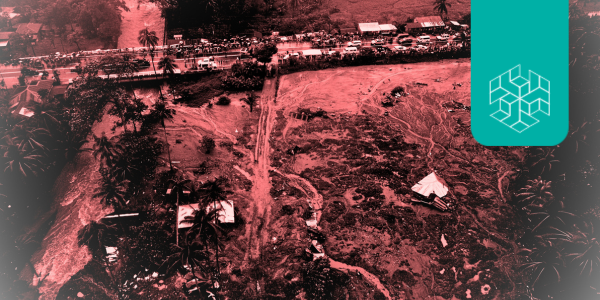Authored by – Raashid Shah (Commentary)
Edited By – Sara Bardhan, Kavita Majumdar, Priyamvada Chaudhary
Introduction
India’s 2011 Census recorded 453 million internal migrants in India, forming a significant 37% of the total population. One out of every five migrants is a child, resulting in an estimated 92.95 million migrant children. However, the Census and National Sample Survey’s [NSS] short-term circular migration estimates are believed to be low and misleading (Srivastava 2020). The absolute number of short-term circular migrants as estimated by the India Human Development Survey [IHDS] 2011-12 stood at 200 million. These estimates were more than 10 times the 2007-08 estimates by NSS with 15.2 million short-term migrants (Nayyar and Kim 2018).
Seasonal migration usually involves labour migrants leaving their source areas at specific periods of the year, usually coinciding with the post-harvesting period beginning around October-November, to regions with a higher demand for labour typically in industries or agriculture for work. This movement from poor rural regions and agriculturally backward areas is predominantly a result of regional inequalities and uneven development across Asia (Deshingkar 2006). Most of these seasonal migrants find work in the manufacturing, construction, and agricultural sector.
Children whose parents migrate either accompany them to work sites or stay back in the source village, left behind without one or both parents. The generally fixed nature of the schooling system makes it difficult for children who accompany their parents to continue their education during their movement to and from the sites of work, and the stay therein. This results in the children missing regular schooling for prolonged periods of time. Since this movement overlaps with several months of the academic calendar, migrant children only get to go to schools between June and November (Smita 2008). While away from home, these children are often enrolled in school as per school records despite not having attended the school for many months.
At destination sites, educational facilities are usually not easily accessible. Since these children arrive in the middle of the academic calendar, they are usually not enrolled in the same period and end up losing an entire schooling year. Schools do not provide any training, bridge courses or support to these children to overcome the loss in educational gains. The children also end up repeating the same classes multiple times, which proves to be a significant roadblock in their educational progress (UNESCO 2016). Several regional studies including those by Majumder and Rajarshi (2011) and Aide et Action (2014) have found low enrolment and active schooling levels among migrant children.
Children left behind by migrant parents have less supervision and academic support resulting in a less conducive learning environment at home. These children may also experience emotional and behavioural issues including higher risk of conduct disorder, anxiety, depression, and suicidal ideation, when compared with children of non-migrants (Fellmeth et al., 2018). While the impact of seasonal migration on the children left behind hasn’t been explored extensively in India, certain localised studies in Odisha, Bihar and West Bengal have found a negative impact of migration on children’s education, psycho-social development, and cognitive abilities (Roy, Singh, and Roy 2015; Biswal 2020; Agasty 2016; Nguyen 2016). Roy, Singh, and Roy (2015), in their assessment of the impact of father’s absence on children’s behaviour and performance in school, found that the children left behind showed more disobedience, bad habits, and poor performance in school compared to non-migrant children. School attendance is also often lower in children of migrant households than non-migrant households. Moreover, at higher age groups, dropout rates are also higher for children of migrant households (Agasty 2016).
Policy Recommendations
Hitherto, state interventions have mainly focused on stationary measures by keeping the children at the source region instead of addressing the various other issues faced by children of seasonal migrants (Chandrasekhar and Bhattacharya 2018; UNESCO 2019). Policies aimed at educational inclusion of migrants’ children need to accommodate the special needs of these children. More site schools, offering flexible curriculum, multilingual teaching, special training, and bridge courses, need to be established to cater to children living in and around work sites where very few schools are present.
Educational exclusion of migrant children needs to be understood in the context of a discord between ‘mobile childhoods’ and ‘immobile schools’. Existing pedagogy and curriculum, even with the intervention of governments and NGOs to help bridge learning gaps among migrant children, is, in certain ways, unable to cater to the special needs of these children (Rajan 2021). To address the dissonance between the fixed nature of the current schooling system and non-stationary migrant childhoods, there’s a strong need to rethink schooling as it stands. While instructional interventions, as suggested in the Draft National Educational Policy (Government of India 2019), and other periodic initiatives might be able to impart education to migrant children temporarily, long run inclusion is possible only when the special needs of these children are taken into account. For these needs to be permanently addressed requires reformation of the entire schooling system to make it more flexible and inclusive.
There is also an immediate need for the creation of a nationwide database on seasonal migration and the corresponding effects. States should be required to create migrant portals with data on in and out migrants and their families. This data can be used to ensure that the movement between states does not prevent migrant families from accessing various services related to food, healthcare, and education, and to devise targeted interventions that would be effective in strengthening educational inclusion of children affected by migration. With the help of a national database, regions with higher numbers of in-migrants can be identified. These regions can then be declared as Special Economic Zones [SEZs] as prescribed in the National Educational Policy (2020). Given that Special Economic Zones are to receive concerted efforts, in addition to schemes and policies implemented to the maximum, migrant children in these regions, once identified as Socio-Economically Disadvantaged Groups [SEDGs], can be expected to have better chances of educational inclusion than before. Comparable to the Migration Card initiative in Gujarat, digital repositories should be created across all states containing educational details of all migrant children. The presence of digital records accessible to all states should enable students to sit in exams and continue their education at source or destination states even when they travel in the middle of the academic calendar. In addition to this, accessing educational opportunities needs to be incentivised to retain the children who are prone to dropping out of schools.
CONCLUSION
Seasonal migration adversely affects the education of children from migrant families. Children travelling to work sites either drop out of school at source villages or stay nominally enrolled. At work sites, educational opportunities are limited. Children often end up completely dropping out of schools or struggle with learning gaps caused due to prolonged absence. Children left behind at their source village experience significant emotional and behavioural difficulties due to the absence of the parent(s). These, in turn, affect children’s education, psycho-social development and cognitive abilities. While there have been several attempts to strengthen educational inclusion of these children, most of these have not recognised the factor of mobility. Policies aimed at improving the educational conditions of children of migrant families must be tailored to the special needs of these children.
REFERENCES
Agasty, Mahendra P. (2016). “Migration of Labour and its Impact on Education of Left Behind Children: A Case Study of Rural Odisha”. International Journal of Research in Humanities and Social Studies 3(4): 57-63.
Behera, Ratikanta, Umi Daniel, and Roshan Minz. (2014). Young Lives at Worksite. Gurgaon, India: Aide et Action and Bernard van Leer Foundation. Accessed 13 July 2021, https://www.researchgate.net/publication/261921759_Young_Lives_at_Worksite.
Biswal, Madan. (2020). “Impact Of Seasonal Migration on Children of a Scheduled Caste Community in Western Odisha, India”. EPRA International Journal of Economic and Business Review 8(2): 72-78.
Chandrasekhar, S, and Leena Bhattacharya. (2018). “Education of Children from Migrant Rural Households in India: Moving Towards a Coherent Policy Framework”. Paper commissioned for the 2019 Global Education Monitoring Report: 1-29
Desai, Sonalde and Reeve Vanneman. (2012). India Human Development Survey-II (IHDS-II) 2011-12. India Human Development Survey (IHDS) Series. Accessed 13 July 2021, https://doi.org/10.3886/ICPSR36151.v6.
Deshingkar, Priya. (2006). “Internal migration, Poverty and Development in Asia”. Institute of Development Studies and Overseas Development Institute Briefing Paper, 11: 1-18.
Fellmeth, Gracia, Kelly Rose-Clarke, Chenyue Zhao, Laura K Busert, Yunting Zheng, Alessandro Massazza, Hacer Sonmez, Ben Eder, Alice Blewitt, Wachiraya Lertgrai, Miriam Orcutt, Katharina Ricci, Olaa Mohamed-Ahmed, Rachel Burns, Duleeka Knipe, Sally Hargreaves, Therese Hesketh, Charles Opondo, Delan Devakumar. (2018). “Health impacts of parental migration on left-behind children and adolescents: a systematic review and meta-analysis”. The Lancet 392 (10164): 2567-2582.
National Sample Survey Office. (2010). Migration in India, 2007–08: NSS 64th Round. New Delhi, India: Ministry of Statistics and Programme Implementation, Government of India. Accessed 13 July 2021,
http://mospi.nic.in/sites/default/files/publication_reports/533_final.pdf.
Ministry of Human Resource Development. (2019). Draft National Education Policy 2019. New Delhi, India: Government of India. Accessed 13 July 2021, https://www.education.gov.in/sites/upload_files/mhrd/files/Draft_NEP_2019_EN_Revised.pdf.
Ministry of Human Resource Development. (2020). National Education Policy 2020. New Delhi, India: Government of India. Accessed 13 July 2021, https://www.education.gov.in/sites/upload_files/mhrd/files/NEP_Final_English_0.pdf.
Majumder, Rajarshi. (2011). “Paternal migration, child labour and education: a study in brickfield areas of West Bengal.” Munich Personal RePEc Archive, MPRA Paper 40940. Accessed 13 July 2021, https://mpra.ub.uni-muenchen.de/40940/.
Nayyar, Gaurav and Kyoung Yang Kim (2018). “India’s Internal Labor Migration Paradox: The Statistical and the Real.” World Bank Policy Research Working Paper Series 8356. Accessed 13 July 2021,
https://openknowledge.worldbank.org/handle/10986/29416.
Nguyen, Cuong Viet. (2016). “Does parental migration really benefit left-behind children? Comparative evidence from Ethiopia, India, Peru and Vietnam.” Social Science & Medicine 153: 230-239.
Rajan, Vijitha. (2021). “The Ontological Crisis of Schooling: Situating Migrant Childhood and Educational Exclusion.” Contemporary Education Dialogue 18(1).
Roy, Archana K., Pappu Singh, and U. N. Roy. (2015). “Impact of rural-urban labour migration on education of children: A case study of left behind and accompanied migrant children in India.” Space and Culture India 2(4): 17-34.
Smita, Smita. (2008). “Distress Seasonal Migration and its Impact on Children’s Education”. Falmer, UK: Consortium for Research on Educational Access, Transitions and Equity. Accessed 13 July 2021, http://www.create-rpc.org/pdf_documents/PTA28.pdf.
Srivastava, Ravi. (2020). “Labour Migration, Vulnerability, and Development Policy: The Pandemic as Inflexion Point?”. The Indian Journal of Labour Economics 63(4): 859-883.
UNESCO. (2016). Global Education Monitoring Report, Education for people and planet: Creating Sustainable Futures For All. Paris, France: United Nations Educational, Scientific and Cultural Organization. Accessed 13 July 2021,
https://en.unesco.org/gem-report/report/2016/education-people-and-planet-creating-sustainable-futures-all.
UNESCO. (2019). Global Education Monitoring Report. Migration, displacement and education: Building Bridges, Not Walls. Paris, France: United Nations Educational, Scientific and Cultural Organization. Accessed 13 July 2021,
https://en.unesco.org/gem-report/report/2019/migration.



